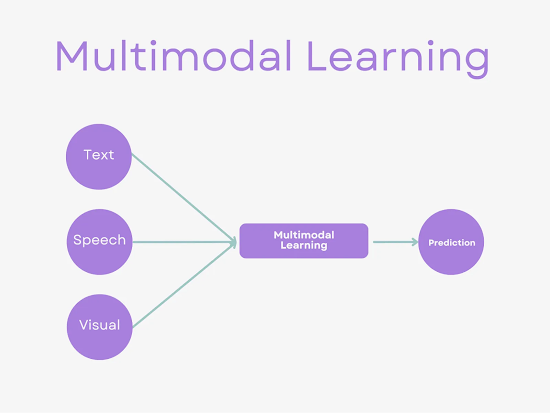Are you ready to embrace the multimodal future?
Multimodal Models: Seeing, Hearing, and Understanding the World
Introduction
Imagine a world where computers could understand and respond to you like a human, combining sight, sound, and language seamlessly. This isn't science fiction anymore. It's the world of multimodal models. These incredible tools are changing how we interact with technology. Let's dive in and explore this exciting field.
What is a Multimodal Model?
Think of a multimodal model as a super-powered computer brain. Unlike traditional models that focus on just one type of data, like text or images, multimodal models can handle different kinds of information at the same time. They can understand pictures, videos, sounds, and text, and figure out how they all relate to each other. It's like having super senses!
The Secret Behind Multimodal Models
The magic behind multimodal models lies in their ability to learn from lots of different data. They use complex math and computer science to find patterns and connections between images, sounds, and words. It's like teaching a computer to think like a human, by giving it lots of examples to learn from.
Multimodal Models and Computer Vision
One of the superpowers of multimodal models is computer vision. This is the ability to understand and interpret visual information. Imagine a model that can look at a picture of a cat and not just recognize it as a cat, but also understand that it's a furry animal with four legs and whiskers. That's the power of computer vision!
Multimodal Deep Learning
To create these super-powered models, we use a special kind of artificial intelligence called deep learning. It's like teaching a computer to learn on its own, by looking at lots of examples. Deep learning helps multimodal models understand the complex relationships between different types of data.
Key Components of Multimodal Models
Multimodal models are built on three main pillars:
- Computer vision: Understanding images and videos.
- Natural language processing: Understanding text and speech.
- Fusion mechanisms: Combining information from different sources.
These three work together like a team to create a model that can truly understand the world around it.
Significance of Multimodal Models
Multimodal models are changing the game in many ways. They can help us:
- Understand complex information: By combining different types of data, we can get a deeper understanding of things.
- Create new and innovative applications: Imagine creating virtual assistants that can see, hear, and talk to you.
- Improve human-computer interaction: Multimodal models can make technology more natural and intuitive to use.
Applications of Multimodal Models
The possibilities are endless! Here are just a few examples:
- Image and video captioning: Describing what's happening in a picture or video.
- Virtual assistants: Creating more natural and helpful assistants.
- Medical image analysis: Helping doctors diagnose diseases by analyzing medical images.
- Social media analysis: Understanding the mood and sentiment of social media posts.
- Education: Creating interactive and engaging learning experiences.
Conclusion
Multimodal models are revolutionizing the way we interact with technology. By combining information from different sources, they are opening up a world of possibilities. From understanding the world around us to creating new and innovative applications, these models are shaping the future.
As multimodal models continue to develop, we can expect even more amazing things. Imagine a world where computers can truly understand and respond to us in the same way we understand each other. That future is closer than we think.
The potential of multimodal models is truly exciting. As researchers and developers continue to push the boundaries, we can look forward to a future where technology becomes an even more integrated part of our lives.
Multimodal models are not just about technology; they are about understanding the world in a richer, more human-like way. This is a field that is constantly evolving, and we can expect to see even more groundbreaking advancements in the years to come.
Compiled by: Er. Arjun (Data Scientist)




Comments
Post a Comment